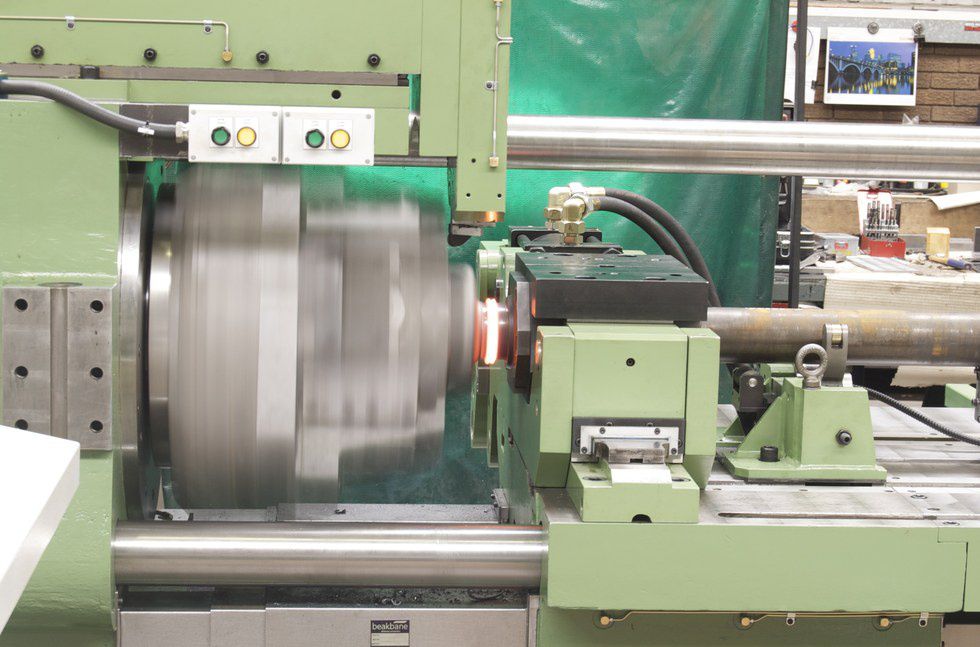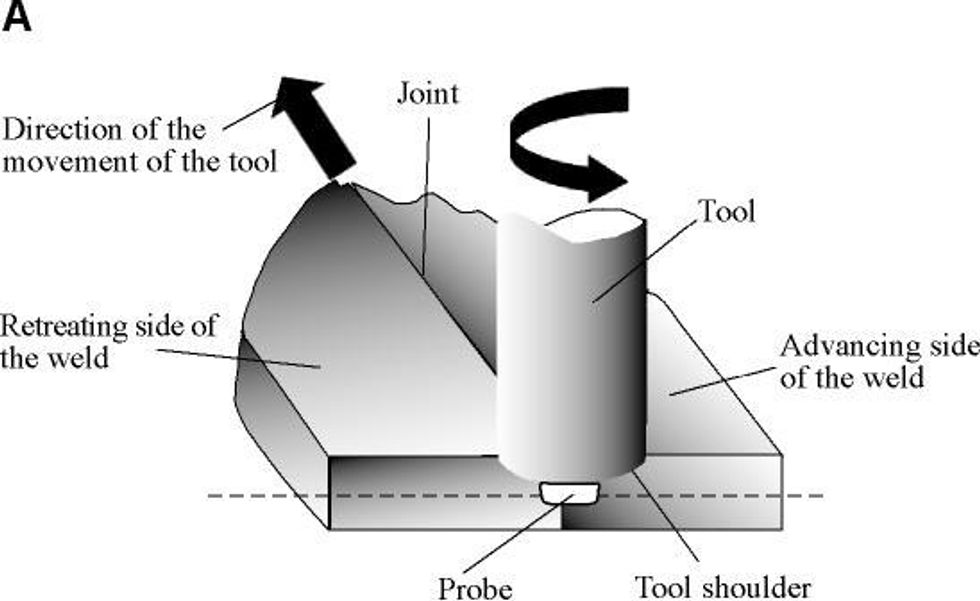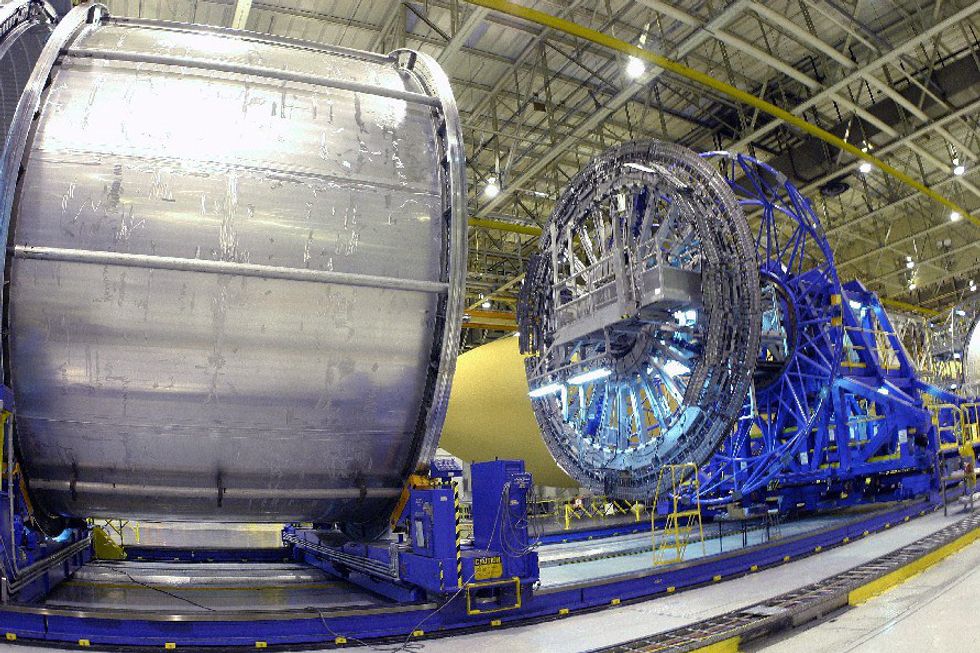One problem engineers and metallurgists have faced since the advent of bronze smelting is that of how to join to different pieces of metal and form a joint that is just as structurally sound as it's components. At first glance, this quandary has seemingly been solved for quite some time; yet as our cumulative grasp on technologies has advanced, new and peculiar circumstances demand innovative solutions such as friction welding.
Before we begin, we need to define a term, welding. Typically when people talk about welding, they are referring to Fusion Welding, the process in which both workpieces being joined are liquified at the joint and the resulting molten material flows together sealing the joint.(“Friction Welding” Wiki.) As a result, friction welding is a misnomer of sorts and we will revisit this after each type of friction welding is explained further.
(Rotary Friction Welding)
The first type of friction welding chosen to be explained is rotary friction welding. In this process, two workpieces are heated using the friction of the surfaces to be joined. One piece is held still, while the other piece is rotated at high speed. After enough heat is generated to make the two pieces pliable, they are forced together in a plastic like state and fused. (“Friction Welding” Wiki.)
(Friction Stir Welding)
The alternative type of friction welding is referred to as friction stir welding. In this process two workpieces are butted together at a joint and then a probe of non-consumable metal, harder than the materials to be fused is rotated at high RPMs. The friction generated by the probe is what heats the metal to be fused.(Midling, Olie)
Back to the topic above, the term “Friction Welding” is actually a forging process. This is because in both friction welding processes, the metals being fused are never fully liquified and formed together by force or stirring motion of the tool. The malleable plastic-like state that the workpieces are in when they are joined is very similar to the way in which high temperature plastics are formed as well. (“Friction Stir Welding” Wiki).
The uses for this process are astronomical in scope. This pun being very much intended, NASA uses the friction stir welding process on their spacecraft. Pressurized tanks are an example of what NASA uses Friction Stir welding on. The process itself has the advantage of being able to fuse softer, nonferrous material such as aluminum in instances where the material cannot be subject to post-fusion heat treatment. (NASA Now: Engineering) One drawback is that since no molten fusion has occurred, inspection of the weld is imperative to ensure that no markers of a weak weld are present such as pores or fissures in the weld seam after it has cooled.(NASA Now: Engineering)
As technology brought mankind into the space age, the metallurgic and engineering processes behind the scenes are what made the aforementioned technological advances feasible. What's more, as the constraints on humanity's frontiers are diminished, it stands to reason that new problems will continue to arise and innovative solutions will continue to be needed.
























